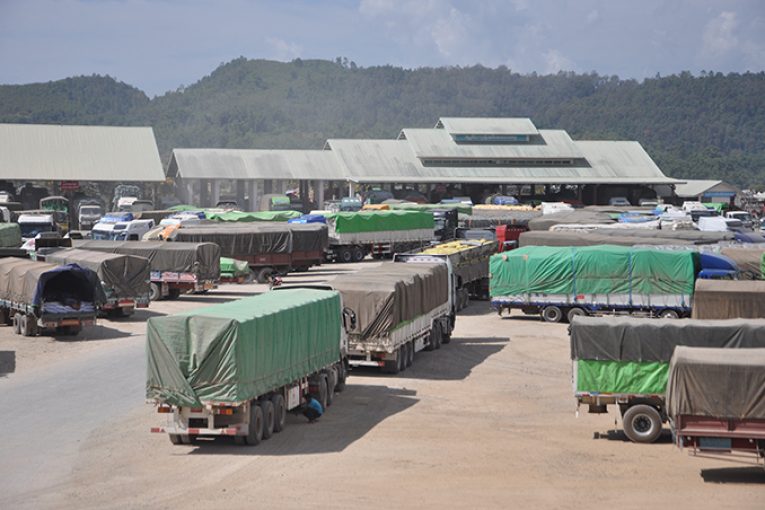27 January
Sino-Myanmar border trade registered an increase of US$573.668 million between 1 October and 17 January in the current financial year, according to the Ministry of Commerce.
Data from the ministry shows the value of Sino-Myanmar border trade rose to $2 billion in the current fiscal from $1.46 billion recorded in the year-ago period.
This FY, the value of border trade totaled $1.67 billion at Muse, $33.89 million at Lweje, $188.4 million at Chinshwehaw, $140.87 million at Kanpiketee, and $2.878 million at Kengtung.
In a bid to lower trade barriers and offer relief to Myanmar traders through the border trade channel, officials from the Ministry of Commerce, the related departments, and the Union of Myanmar Federation of Chambers of Commerce and Industry have been negotiating with their Chinese counterparts.
The two countries are making efforts to set up more border economic cooperation zones and promote border trade.
During Chinese premier Xi Jinping’s recent visit to Myanmar, Myanmar and China signed MoUs on Local Cooperation under the Framework for Joint Building of the China-Myanmar Economic Corridor (CMEC) between the Yunnan Province of China and the Mandalay Region of Myanmar, Protocol on Plant Inspection and Quarantine Requirements for Exporting Rice From Myanmar to China, Protocol for Heat Processed Cocoons to be imported from Myanmar to China, Protocol on Quarantine Health Requirements for Slaughter Bovine to be Exported from Myanmar to China, Exchange Letter for the Project of Agricultural Product Quality Control Centre, Establishment of the Working Group for the Promotion of Smooth Trade between the Ministry of Commerce of Myanmar and the Ministry of Commerce of China, and many other agreements.
Following the MoUs between Myanmar and China, bilateral trade will grow, said a market observer.
Myanmar exports rice, sugar, pulses, sesame seeds, corn, dried tea leaves, fishery products, minerals, and animal products to China, while it imports agricultural machinery, electrical appliances, iron and steel-related materials, raw industrial goods, and consumer goods from the neighboring country. — Htet Myat (Translated by Ei Myat Mon)



